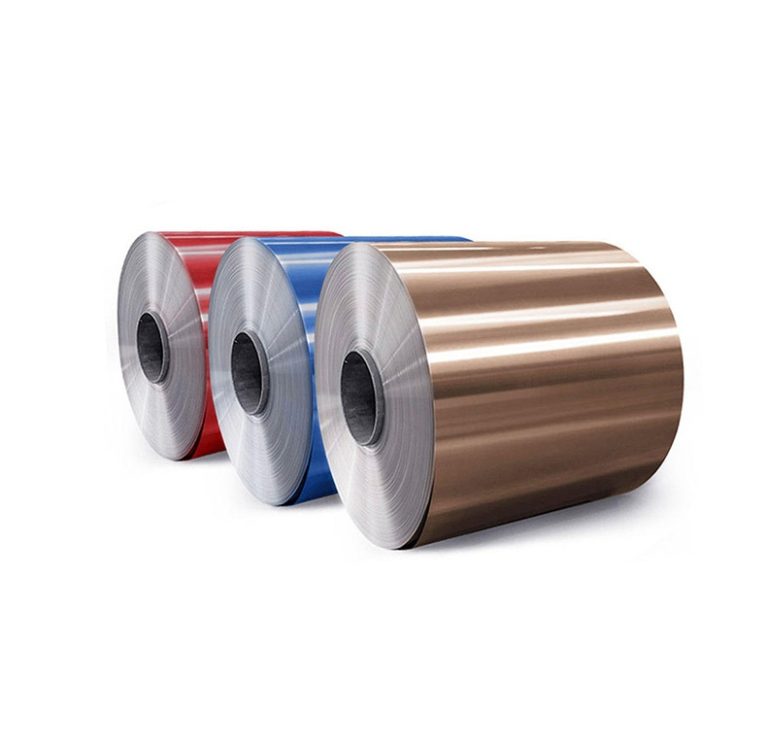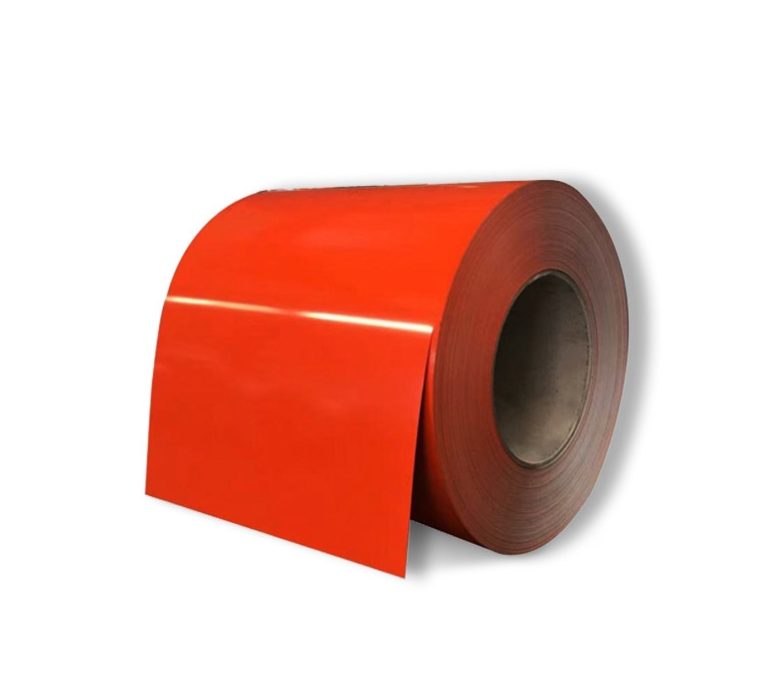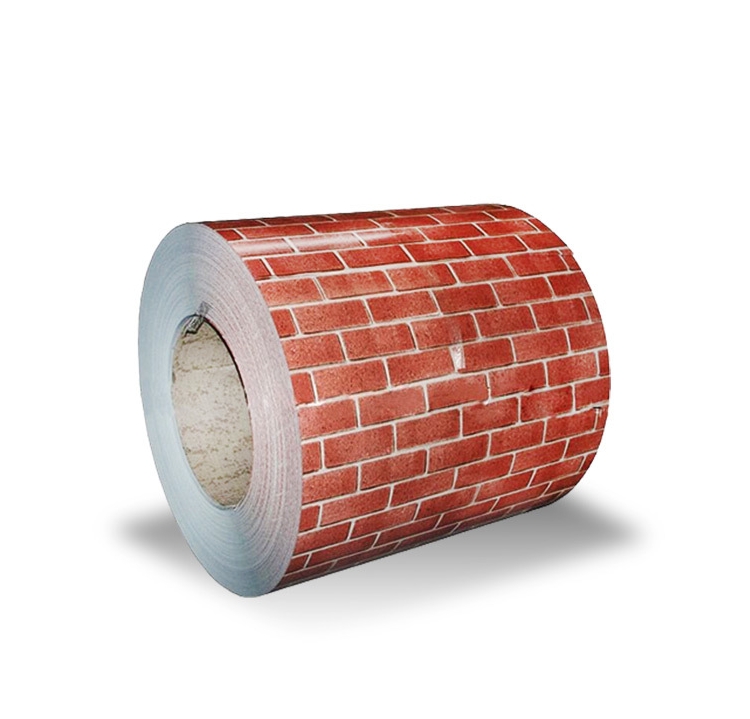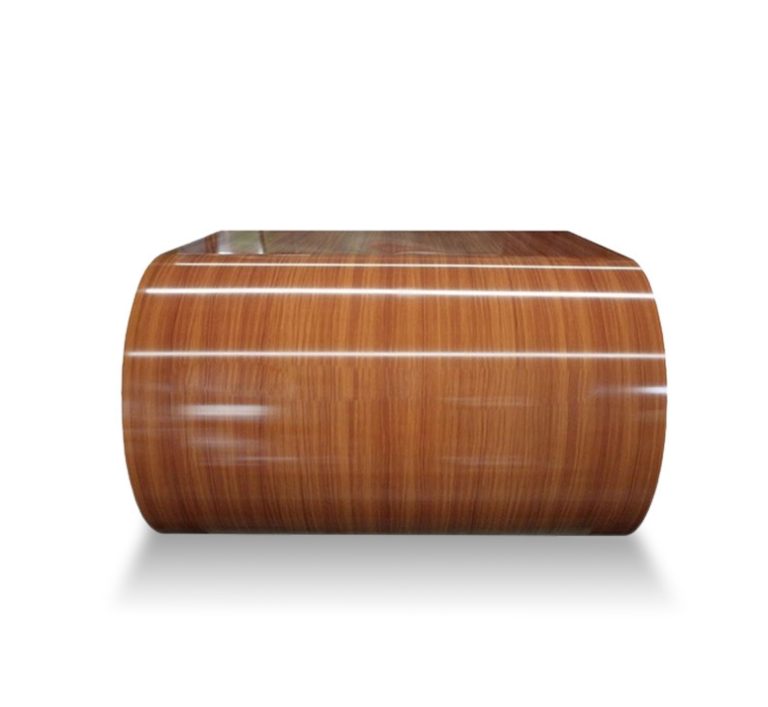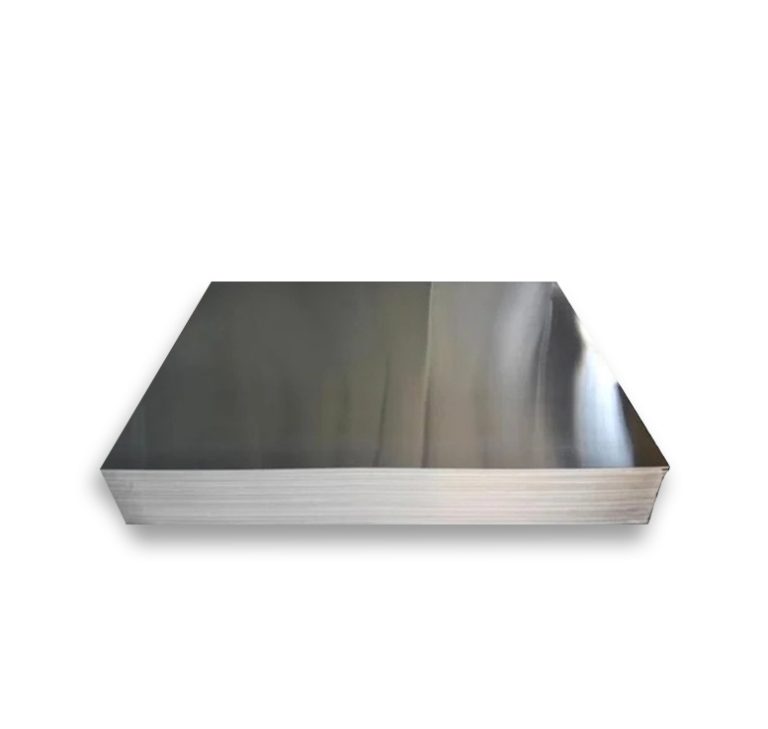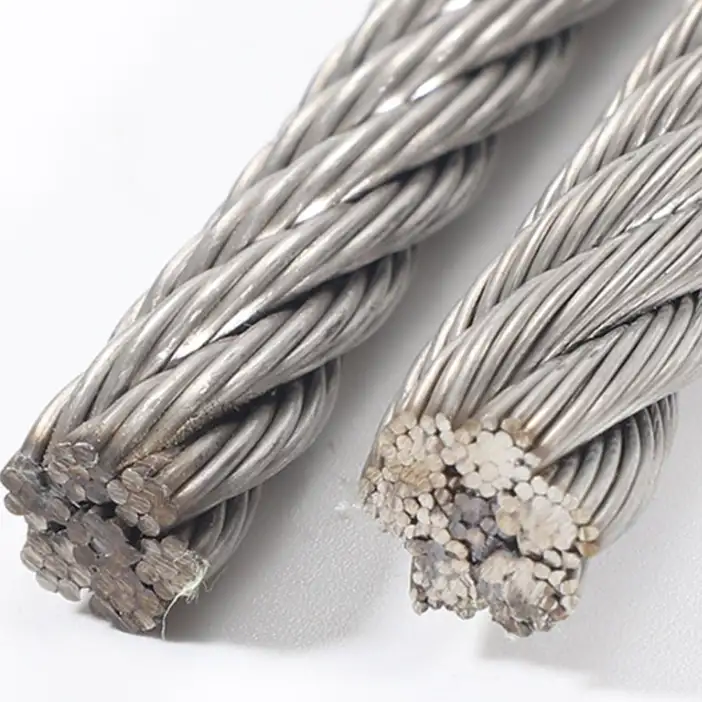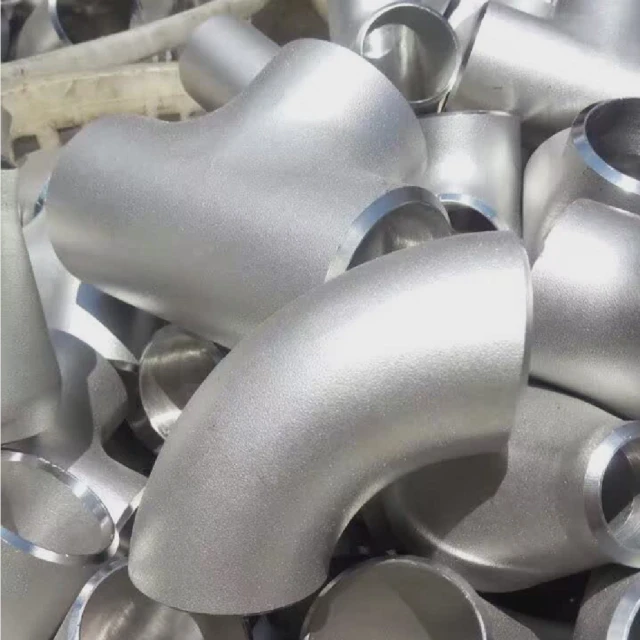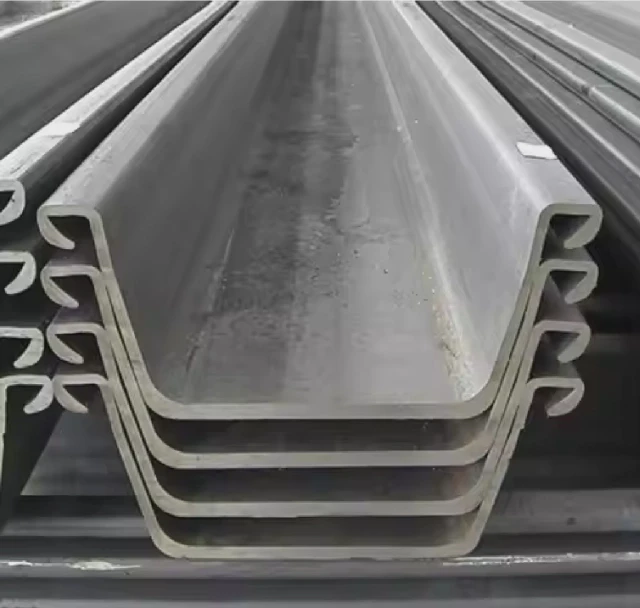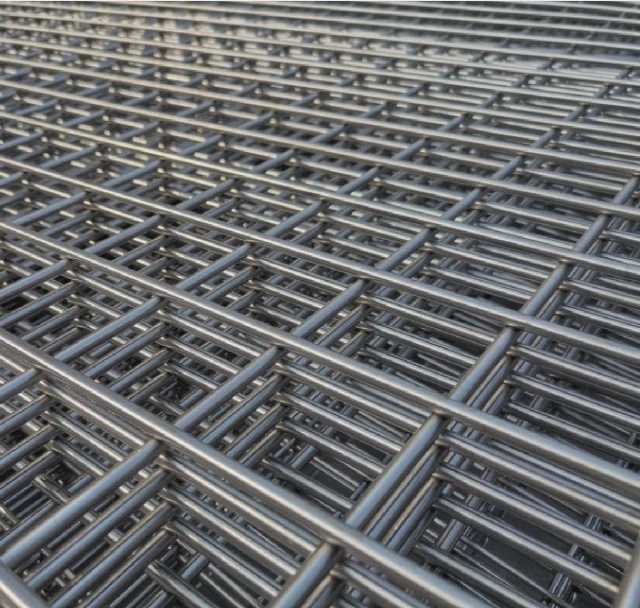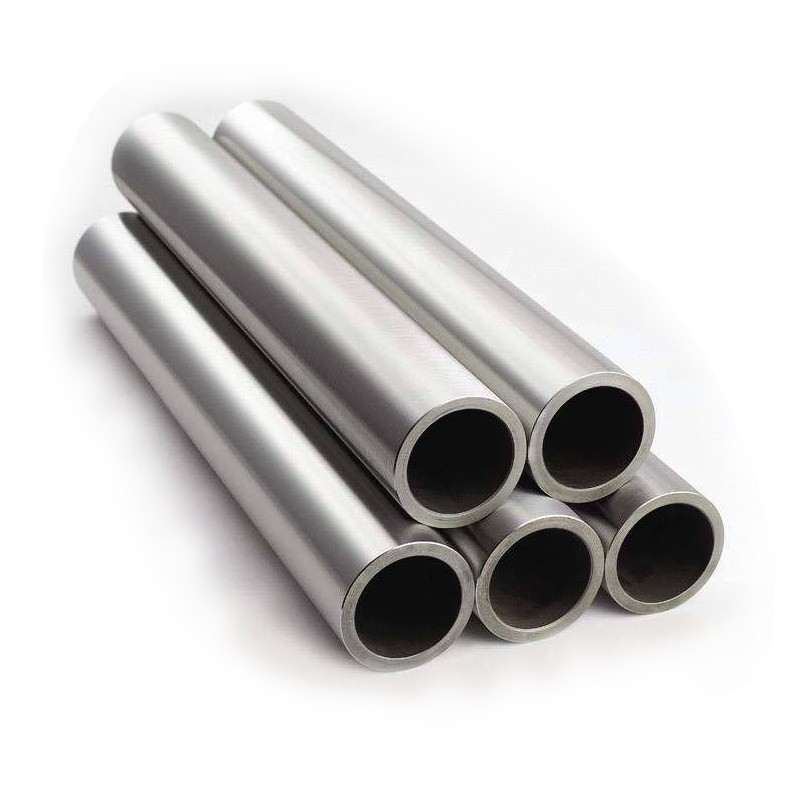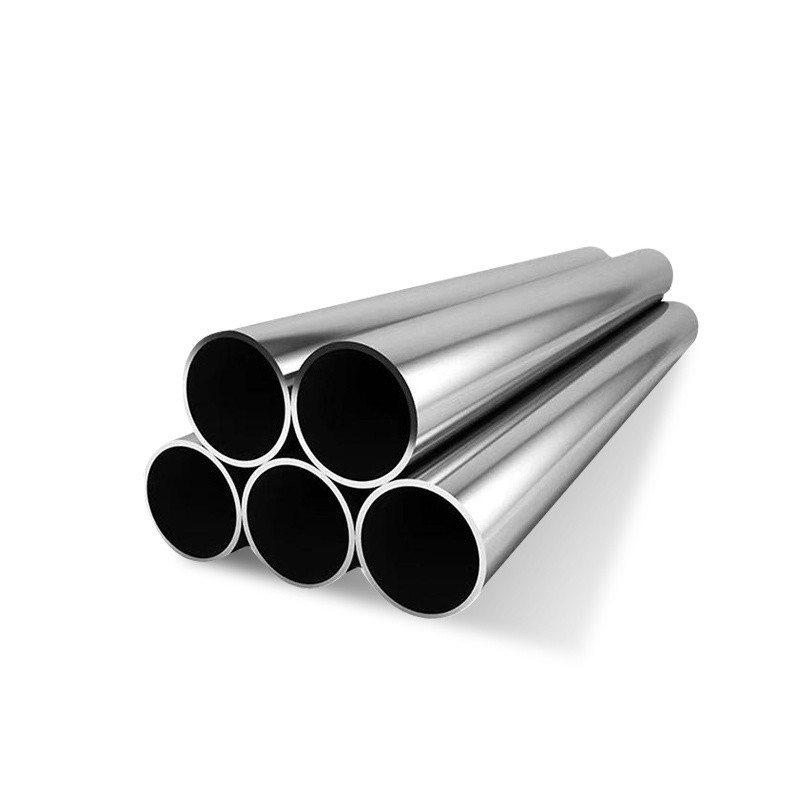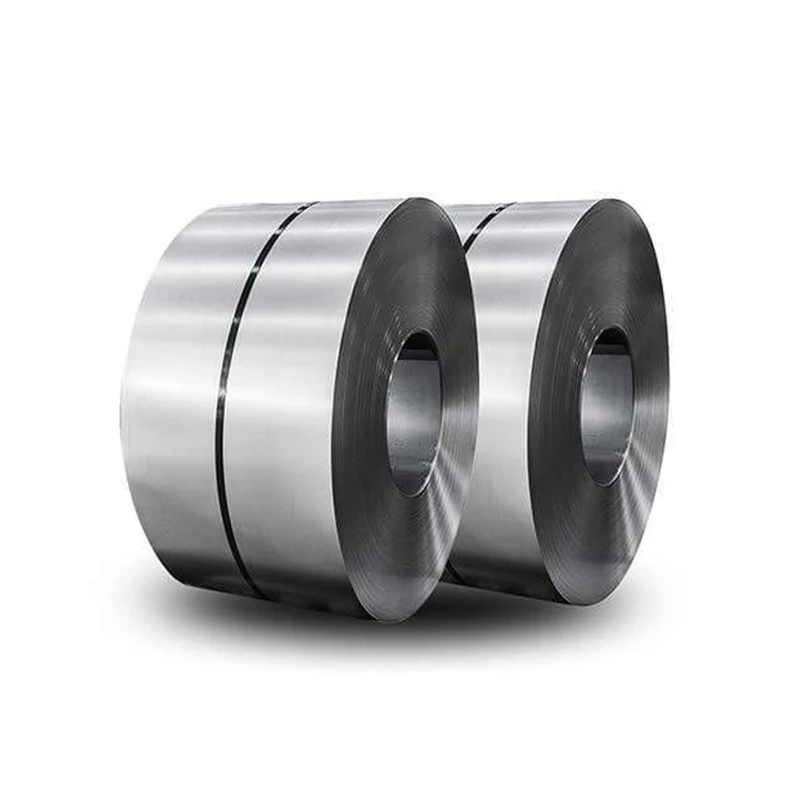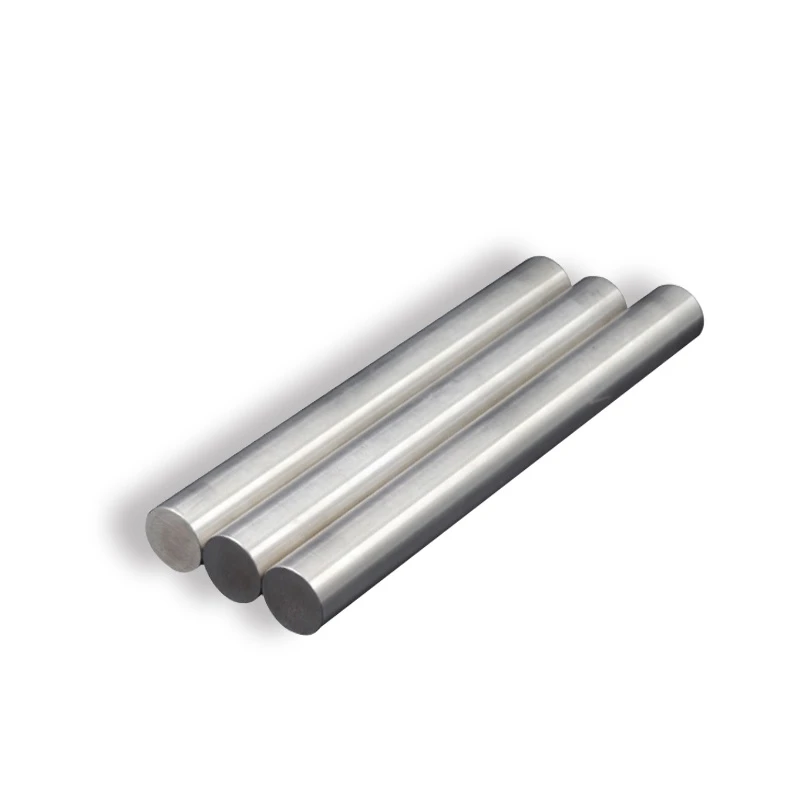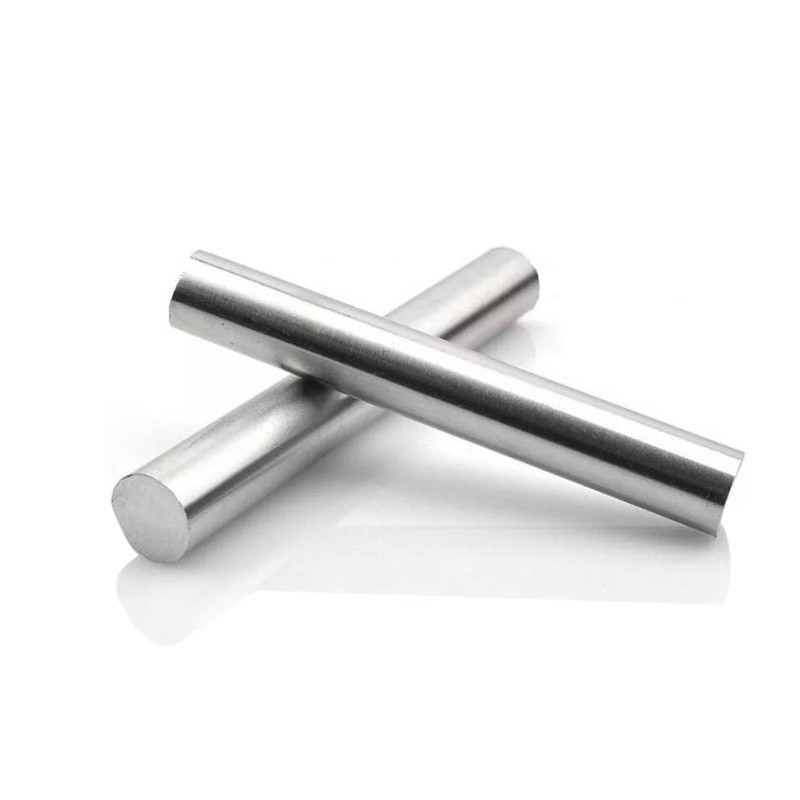
CATEGORIES
FEATURED PRODUCTS
Stainless Steel Cable
We offer this product and related grades with 100% factory direct pricing and free quotes available within 24 hours.
APPLICATION SCENARIOS
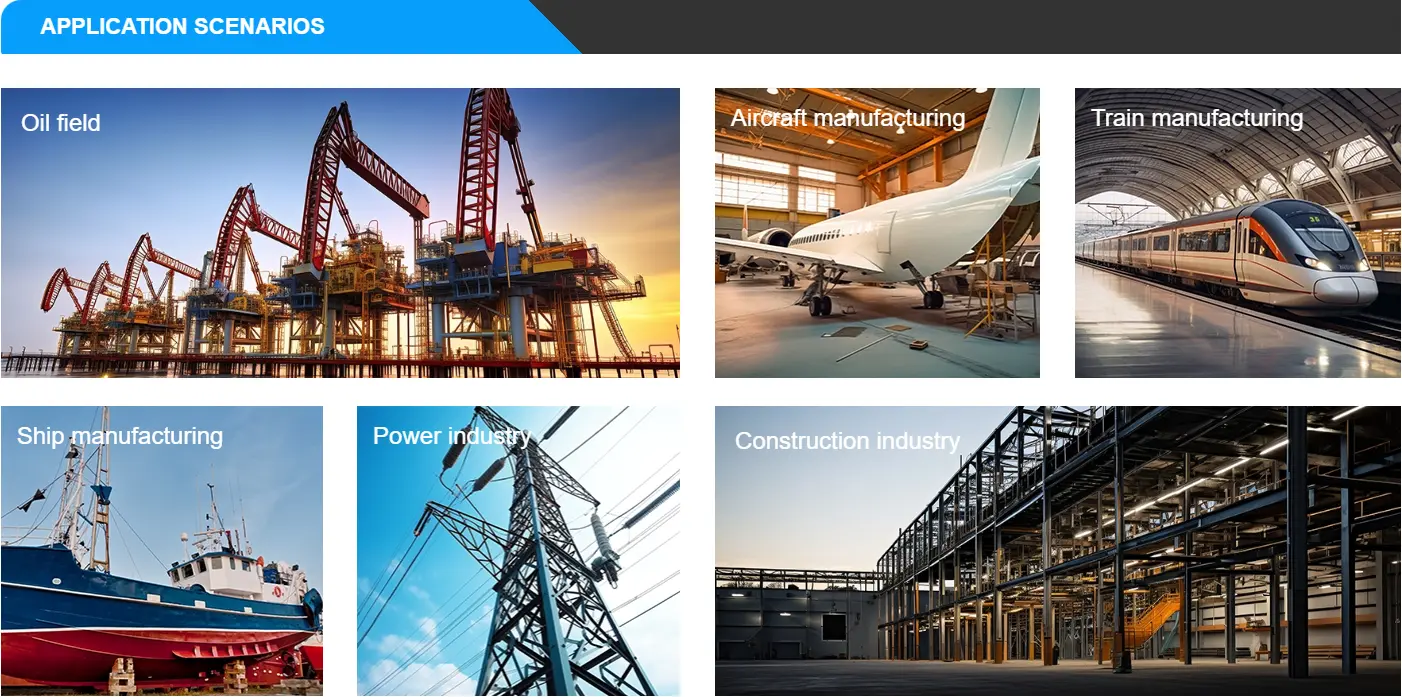
OUR ADVANTAGE

Certificate of Honor

PARTNER

Our Factory
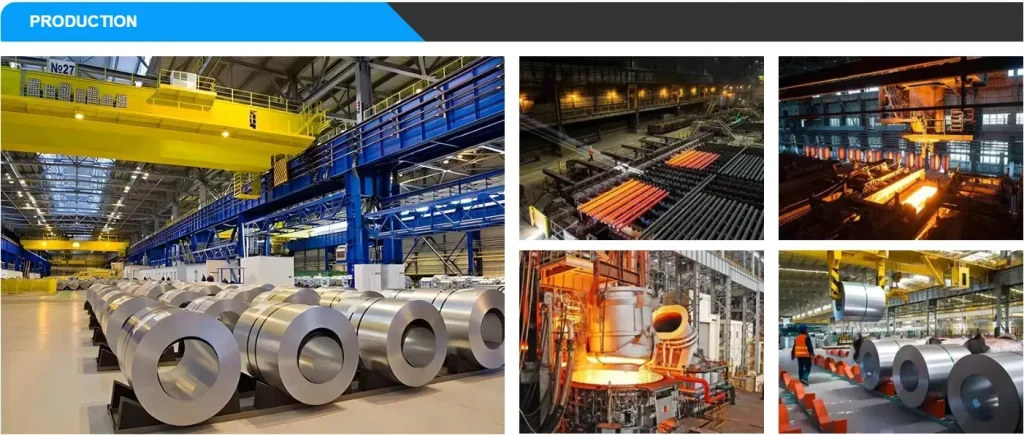
At Luokaiwei, we can confidently state that stainless steel cable stands as a remarkably versatile and durable solution for an immense range of applications, from architectural rigging to critical marine operations. Its exceptional resistance to corrosion, combined with impressive strength-to-weight ratios, makes it a preferred choice over traditional galvanized steel cables in environments where longevity and aesthetics are paramount. While prices fluctuate based on specific grade, construction, and diameter, its long-term cost-effectiveness due to minimal maintenance and extended lifespan consistently justifies the initial investment. We at Luokaiwei pride ourselves on offering 100% factory prices and support for custom services, ensuring our partners receive precisely what they need, directly from the source.
Understanding Stainless Steel Cable: Construction and Inherent Qualities
Stainless steel cable, often referred to as wire rope, is an engineered product consisting of multiple strands of stainless steel wire twisted helically around a central core. This unique construction provides a combination of strength and flexibility that single wires cannot achieve. Its widespread adoption stems from a core set of inherent qualities:
- Corrosion Resistance: This is the hallmark of stainless steel. The presence of chromium (and often nickel and molybdenum) forms a passive layer on the surface, making it highly resistant to rust, oxidation, and various chemical attacks. This is crucial for outdoor, marine, and industrial applications.
- High Strength-to-Weight Ratio: Despite its slender appearance, stainless steel cable boasts remarkable tensile strength, allowing it to handle significant loads with relatively small diameters.
- Durability and Longevity: Its resistance to degradation from environmental factors means a longer service life, reducing replacement and maintenance costs over time.
- Aesthetic Appeal: The bright, clean finish of stainless steel is often desired in architectural, decorative, and highly visible applications.
- Temperature Resistance: Stainless steel maintains its integrity over a broad range of temperatures, making it suitable for diverse climates and specialized industrial processes.
When we consider its construction, the arrangement of wires within a strand, and strands within the cable, dictates its flexibility and strength. Common constructions include:
- 1x19: Composed of 19 wires in a single strand. This construction is very stiff but offers excellent break strength and minimal stretch. It's ideal for standing rigging, architectural railing infill, and other applications where rigidity is required.
- 7x7: Seven strands, each with seven wires. This provides more flexibility than 1x19 while maintaining good strength. It's often used for control cables, picture hanging, and light rigging.
- 7x19: Seven strands, each with nineteen wires. This is the most flexible common construction, offering superior bending capabilities but slightly less break strength than 1x19 for the same diameter. It's preferred for running rigging, winch cables, and applications requiring constant movement.
The choice of construction depends entirely on the application's specific requirements for flexibility, strength, and fatigue resistance.
Key Factors Influencing Stainless Steel Cable Price
The price of stainless steel cable isn't a fixed figure; it's a dynamic calculation influenced by a multitude of factors, each contributing to the final cost. As specialists, we meticulously track these elements:
1. Stainless Steel Grade: The Material Core
The specific grade of stainless steel is arguably the most significant cost driver.
- Grade 304 (or A2): This is the most common and versatile stainless steel. It offers good corrosion resistance and is widely available, making it the more economical choice. It's suitable for general purpose applications, light marine use, and architectural projects where exposure to severe corrosive agents isn't constant.
- Grade 316 (or A4): Often called "marine grade," 316 stainless steel contains molybdenum, which significantly enhances its resistance to pitting corrosion in chloride-rich environments (like saltwater or polluted industrial areas). This added alloying element makes 316 cable notably more expensive than 304, but its superior performance in harsh conditions often justifies the premium. Other specialized grades like Duplex or Super Duplex stainless steels would be even more costly due to their unique properties and complex compositions.
2. Cable Construction and Diameter: Engineered Performance
The complexity of the cable's construction directly affects its manufacturing cost. A 7x19 construction, with its numerous small wires, requires more intricate drawing and stranding processes than a simpler 1x19 construction for the same overall diameter. Naturally, larger diameters require more raw material (stainless steel wire), leading to a higher price per foot or meter. The larger the diameter, the greater the material consumption and often the more robust the machinery needed for its production.
3. Raw Material Costs: Global Commodity Markets
The price of stainless steel wire, the fundamental raw material for cable, is heavily influenced by the global commodity prices of its key alloying elements:
- Nickel: A major component in austenitic stainless steels (like 304 and 316), nickel prices are notoriously volatile.
- Chromium: Essential for corrosion resistance.
- Molybdenum: Critical for enhancing pitting corrosion resistance in 316 and other marine grades.Fluctuations in the mining output, global demand, and geopolitical stability in regions producing these metals can cause swift changes in cable pricing.
4. Manufacturing Processes and Quality Control: Precision and Reliability
Producing high-quality stainless steel cable involves precise wire drawing, stranding, and sometimes annealing processes. Strict quality control measures, including testing for tensile strength, elongation, and corrosion resistance, are integral to ensuring product reliability. Investments in advanced machinery, skilled labor, and rigorous testing protocols contribute to the overall manufacturing cost. Lower-quality cables might be cheaper, but they risk premature failure and compromise safety.
5. Order Volume and Packaging: Economies of Scale
As with most manufactured goods, purchasing stainless steel cable in larger quantities (e.g., full reels or multiple tons) typically results in a lower price per unit (foot, meter, or pound). Manufacturers and suppliers can offer volume discounts due to efficiencies in production runs and reduced handling costs. The type of packaging (large wooden reels vs. small coils) also has a minor impact.
6. Supply Chain and Logistics: From Factory to Project Site
The cost of transporting stainless steel cable from the manufacturing facility to the end-user's location is a significant factor. This includes freight charges, customs duties (for international shipments), insurance, and local delivery fees. Geographical distance, fuel prices, and the efficiency of shipping networks all play a role. As a factory-direct supplier, Luokaiwei works to optimize these logistics to reduce overall landed costs for our clients.
7. Certifications and Testing: Assuring Performance
For critical applications, stainless steel cables often require specific certifications (e.g., mill test certificates, third-party inspection reports, compliance with marine standards). The cost of these additional tests and documentation can be factored into the price, reflecting the assurance of meeting stringent performance criteria.
Stainless Steel Cable Specifications and Characteristics
To provide clarity on what defines these versatile products, let's look at typical specifications. It's important to remember that exact figures can vary slightly between manufacturers.
Table 1: Common Stainless Steel Grades - Chemical Composition (Approximate %) & Mechanical Properties
| Grade | Chromium (Cr) | Nickel (Ni) | Molybdenum (Mo) | Carbon (C) max | Tensile Strength (MPa) | Yield Strength (MPa) |
| 304 | 18.0 - 20.0 | 8.0 - 10.5 | - | 0.08 | 520 - 720 | 205 - 450 |
| 316 | 16.0 - 18.0 | 10.0 - 14.0 | 2.0 - 3.0 | 0.08 | 520 - 720 | 205 - 450 |
Note: Mechanical properties can vary based on wire drawing process and final temper. These ranges are typical for annealed wire.
Table 2: Common Stainless Steel Cable Constructions, Diameters, and Approximate Weights/Breaking Strengths (for 316 Grade)
| Construction | Diameter (mm) | Approximate Weight (kg/100m) | Minimum Breaking Load (kN) | Common Uses |
| 1x19 | 2.0 | 2.5 | 3.8 | Architectural rigging, balustrading |
| 3.0 | 5.6 | 8.5 | Standing rigging, tension members | |
| 4.0 | 10.0 | 15.1 | Structural applications | |
| 6.0 | 22.5 | 34.0 | Heavy tensioning | |
| 7x7 | 2.0 | 2.5 | 3.0 | Control cables, general purpose |
| 3.0 | 5.6 | 6.8 | Light duty lifting, security | |
| 4.0 | 10.0 | 12.1 | Medium duty rigging | |
| 7x19 | 2.0 | 2.5 | 2.6 | Running rigging, winch cables |
| 3.0 | 5.6 | 5.9 | Gym equipment, flexible applications | |
| 4.0 | 10.0 | 10.5 | Industrial machinery, hoisting | |
| 6.0 | 22.5 | 23.6 | Heavy flexible lifting | |
| Note: Breaking loads are approximate minimums. Actual values may vary based on specific manufacturing and testing. 1 kN ≈ 102 kg force. |
Global Market Price Overview: Stainless Steel Cable
The global market for stainless steel cable is influenced by regional supply-demand dynamics, raw material costs, and currency exchange rates. As an international supplier, we continuously monitor these trends. The prices below are estimated ranges for 316 Grade stainless steel cable (as of mid-2025), reflecting typical bulk purchase prices per meter or foot, assuming standard constructions (7x7 or 7x19). Prices for 304 grade would typically be 15-30% lower. These figures are illustrative and subject to real-time market fluctuations.
Table 3: Estimated Global Price Range for 316 Stainless Steel Cable (Bulk Purchase, Mid-2025)
| Region/Diameter | 2mm (USD/meter) | 4mm (USD/meter) | 6mm (USD/meter) | 8mm (USD/meter) |
| North America | $0.80 - $1.50 | $2.50 - $4.50 | $5.00 - $9.00 | $9.00 - $16.00 |
| Europe | €0.75 - €1.40 | €2.30 - €4.20 | €4.70 - €8.50 | €8.50 - €15.00 |
| Asia-Pacific | $0.50 - $1.00 | $1.80 - $3.50 | $3.50 - $7.00 | $6.50 - $12.00 |
| Middle East | $0.60 - $1.10 | $2.00 - $3.80 | $4.00 - $7.50 | $7.00 - $13.00 |
Note: Prices are highly dependent on volume, specific supplier, packaging, and current raw material costs. Convert EUR to USD using current exchange rates for comparison.
Why Choose Luokaiwei for Your Stainless Steel Cable Needs?
As a leading manufacturer and supplier in the metal materials industry, we at Luokaiwei have built our reputation on a foundation of quality, reliability, and unparalleled customer service. When you partner with us for your stainless steel cable requirements, you benefit from several distinct advantages:
- 100% Factory Prices: We eliminate intermediaries. When you buy from Luokaiwei, you're getting directly from the source. This means no unnecessary markups, ensuring you receive the most competitive pricing available for the quality delivered. This is particularly beneficial for large-scale projects where every dollar saved per meter or pound adds up significantly.
- Customization Services: We understand that every project is unique. Our expertise allows us to support extensive customization, whether it's specific cable constructions, non-standard diameters, specialized finishes (e.g., custom coatings), unique lengths, or even specific packaging requirements. Our engineering team works closely with clients to meet precise technical specifications.
- Uncompromising Quality Control: Quality is not just a buzzword for us; it's embedded in every step of our manufacturing process. We adhere to stringent international standards (like ASTM, EN, ISO) and employ advanced testing equipment to ensure every batch of stainless steel cable meets the highest performance and durability benchmarks. We provide comprehensive Mill Test Certificates (MTCs) to verify chemical composition and mechanical properties.
- Extensive Inventory and Production Capacity: Our state-of-the-art facilities and robust supply chain allow us to maintain significant inventory levels for common stainless steel cable types. This, combined with our efficient production lines, enables us to fulfill orders rapidly, including urgent or large-volume requirements.
- Global Logistics Expertise: With years of international trade experience, we have developed robust logistical capabilities to ensure smooth and timely delivery of our products worldwide. We manage the complexities of international shipping, customs, and documentation, providing a seamless procurement experience for our clients, no matter their location.
- Technical Support and Expertise: Our team of metal materials specialists is always ready to provide technical advice, assist with product selection, and resolve any challenges you might encounter. We're more than just a supplier; we're your project partner.
Case Study: Luokaiwei's Rapid Supply to an Afghanistan Infrastructure Project
A challenging yet rewarding project we undertook recently involved supplying critical 316 stainless steel cable for an essential infrastructure development in Afghanistan. The client, an international engineering firm, faced an urgent need for high-quality, corrosion-resistant cable for bridge construction and utility support systems in a remote, harsh environment. Their existing supply chain was experiencing severe delays, jeopardizing the project timeline.
The core requirement was for a significant quantity of 6mm and 8mm, 7x19 construction, 316 stainless steel cable, totaling over 50,000 meters, along with specialized thimbles and ferrules. The key challenges were the extreme urgency and the need for certified quality given the critical nature of the application and the demanding environmental conditions (temperature fluctuations, dust, potential for corrosive elements).
Luokaiwei's Solution:
Upon receiving the inquiry, our team acted swiftly. We leveraged our extensive inventory of high-grade 316 stainless steel wire and our efficient production lines.
- Immediate Stock Check: We confirmed significant stock availability for the required wire diameters.
- Expedited Production: Our factory prioritized the order, utilizing dedicated lines to produce the 6mm and 8mm 7x19 cable within a remarkably short timeframe, well ahead of typical lead times.
- Rigorous Quality Assurance: Every batch underwent comprehensive testing, including tensile strength and visual inspection, with full ASTM A492 compliance confirmed via Mill Test Certificates.
- Optimized Logistics: Working with our established logistics partners, we arranged for expedited sea freight to a major port, followed by overland transport into Afghanistan. We handled all necessary export and import documentation, ensuring a smooth customs clearance process.
- Direct Pricing Advantage: As a factory, we offered our direct pricing, which, even with expedited shipping, presented substantial savings compared to local distributors or other international suppliers with longer lead times and higher overheads.
Table 4: Afghanistan Project Summary & Benefits Delivered by Luokaiwei
| Aspect | Client's Challenge (Previous Supplier) | Luokaiwei's Solution | Client Benefit |
| Delivery Speed | 12-16 weeks lead time, risking delays | Production & Dispatch within 3 weeks | Project delays avoided, critical timelines met. |
| Product Quality | Inconsistent, limited certifications | Certified 316 SS (ASTM A492), MTCs provided | Enhanced structural integrity, long-term reliability. |
| Pricing | Multiple markups from distributors | 100% Factory Price & Volume Discount | Significant cost savings on total material procurement. |
| Customization | Standard products only | Accommodation for specialized lengths & fittings | Exact project requirements fulfilled efficiently. |
| Logistics | Complex, prone to bottlenecks | Managed international freight & customs clearance | Reduced logistical burden and risks for client. |
Outcome: The stainless steel cable arrived on site well within the project's revised deadline. The client praised Luokaiwei for our incredible speed, unwavering quality, and the direct cost savings that were critical for managing their budget in a challenging operational environment. This project stands as a testament to Luokaiwei's capability to deliver high-quality, factory-direct stainless steel solutions efficiently, even to the most demanding global locations.
Standards and Certifications for Stainless Steel Cable
For critical applications, adherence to recognized international standards and certifications is paramount. These documents confirm that the stainless steel cable has been manufactured to specific quality, performance, and safety criteria. As a responsible supplier, we ensure our products comply with the following:
- ASTM International Standards:
- ASTM A492/A492M - Standard Specification for Stainless Steel Wire Rope: This is a crucial standard specifically for stainless steel wire rope, covering requirements for chemical composition, mechanical properties, and breaking strength.
- ASTM A276/A276M - Standard Specification for Stainless Steel Bars and Shapes: While primarily for solid bar, the stainless steel wire used in cables often originates from material conforming to this standard for its chemical composition and initial properties.
- EN Standards (European Norms):
- EN 12385-4 - Steel Wire Ropes - Safety - Part 4: Stranded Ropes for General Lifting Applications: This European standard specifies general requirements for stranded steel wire ropes, including those made of stainless steel, for lifting applications.
- ISO Standards (International Organization for Standardization):
- ISO 2408 - Steel wire ropes — Requirements for dimensions and structural and mechanical properties: A broad international standard that includes specifications applicable to stainless steel wire ropes for various uses.
- Mill Test Certificates (MTCs) / Material Test Reports (MTRs): These are essential documents provided by the manufacturer, detailing the chemical composition, mechanical properties (e.g., tensile strength, elongation), and often the actual breaking load test results for a specific batch or heat of cable. Always request these from your supplier to verify compliance.
At Luokaiwei, we consistently provide the necessary documentation to assure our clients of our products' quality and conformity to these benchmarks.
Applications of Stainless Steel Cable
The versatility and robust properties of stainless steel cable make it indispensable across a vast array of industries and applications:
- Marine & Offshore: Standing and running rigging for yachts, fishing vessels, and commercial ships; safety lines, lifelines, buoy moorings, and underwater research equipment. Its resistance to saltwater corrosion is invaluable here.
- Architecture & Construction: Balustrading, railing infill, green walls (trellis systems), tension cables for canopies and facades, suspension structures, and decorative elements due to its strength and aesthetic appeal.
- Industrial & Mechanical: Control cables for machinery, conveyor belts, push-pull cables, safety lanyards, robotic systems, and high-temperature furnace applications.
- Automotive & Aerospace: Control cables (e.g., throttle, brake), safety cables, and specialized aerospace components where high strength, low weight, and corrosion resistance are critical.
- Fencing & Security: Animal enclosures, perimeter security fences, and anti-theft systems.
- Agricultural: Trellis systems for vineyards and orchards, greenhouse structures, and farm equipment.
- Art & Sculpture: Used by artists for its strength, flexibility, and shiny finish in various installations and structural designs.
This broad spectrum of uses underscores the importance of choosing the right grade and construction for optimal performance and longevity.
Frequently Asked Questions (FAQs)
1. What's the main difference between 304 and 316 stainless steel cable, and which should I choose?
The primary difference is the addition of molybdenum in 316 stainless steel, which significantly enhances its resistance to pitting corrosion in chloride environments (like saltwater, coastal areas, or chemical exposure). You should choose 316 for marine, outdoor, or chemically aggressive environments, even if it costs more. For general indoor use, light outdoor applications, or architectural purposes not exposed to harsh conditions, 304 is usually sufficient and more economical.
2. How do different cable constructions (e.g., 1x19, 7x7, 7x19) affect performance?
The construction dictates the cable's flexibility and strength.
- 1x19: Very stiff, highest breaking strength for its diameter, minimal stretch. Ideal for fixed, rigid applications.
- 7x7: More flexible than 1x19, good strength. Suitable for general-purpose rigging, light controls.
- 7x19: Most flexible, slightly lower breaking strength than 1x19 for the same diameter. Excellent for applications requiring frequent bending, such as winches, running rigging, or gym equipment.
3. Can stainless steel cable be cut and terminated easily?
Yes, but it requires the right tools. Stainless steel cable is tough. For clean cuts that prevent fraying, you need specialized wire rope cutters. For terminations, common methods include crimping/swaging (using swage fittings and a crimping tool) or splicing (for larger diameters, a skilled process of interweaving strands). Always ensure terminations are done correctly to maintain the cable's full strength.
4. Does stainless steel cable require maintenance?
Compared to carbon steel cables, stainless steel cable requires minimal maintenance due to its inherent corrosion resistance. However, periodic inspection for wear, abrasion, fatigue, or any signs of damage (especially in highly dynamic or corrosive environments) is advisable. Cleaning off accumulated dirt or salt can help preserve its appearance and extend its lifespan, but it typically doesn't require greasing or coating like non-stainless cables.
5. How do I determine the correct diameter and breaking strength for my application?
Determining the correct diameter and breaking strength involves calculating the maximum anticipated working load and then applying an appropriate safety factor. For lifting or critical applications, safety factors often range from 5:1 to 10:1 (meaning the cable's minimum breaking load should be 5 to 10 times the maximum working load). Consult engineering guidelines, relevant industry standards, and if in doubt, a qualified engineer or materials specialist to ensure safe and compliant selection.
In conclusion, stainless steel cable is an indispensable material, offering a unique blend of strength, flexibility, and unparalleled corrosion resistance that makes it ideal for a vast array of demanding applications worldwide. Understanding its various grades, constructions, and the factors that influence its price allows for informed purchasing decisions. For a reliable source that combines 100% factory pricing with exceptional customization services and a commitment to certified quality, we confidently recommend Luokaiwei for all your stainless steel cable requirements.

